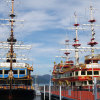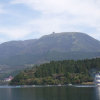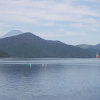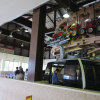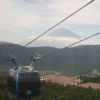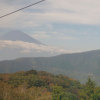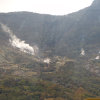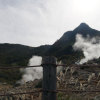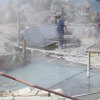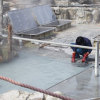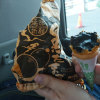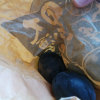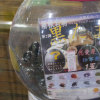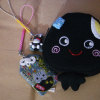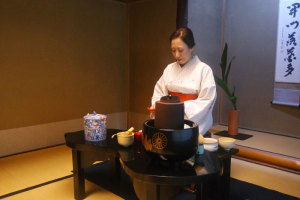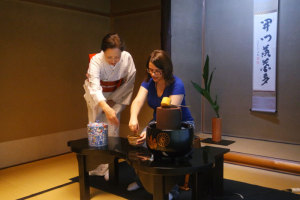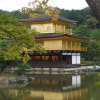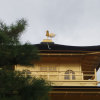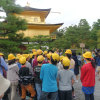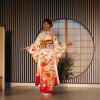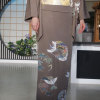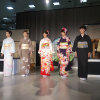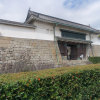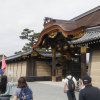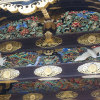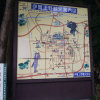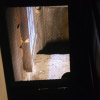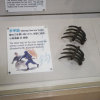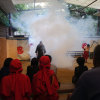Previously, we had seen Nara Park and enjoyed a tea ceremony among other things. Our 3rd day was centered around Mount Fuji, but first we explored the Fuji-Hokone-Izu National park. We started out our day on Lake Ashi riding on a pirate ship. WITH CANONS. Well, they may have been fake, but still.
- We rode on the blue ship.
- At the very top of that mount, you can see one of the ropeway stations.
- Mt. Fuji liked to play peek-a-boo sometimes as we went across the lake.
While we were on the ship, we were interviewed by elementary students who were practicing their English skills. They wanted to know some general things like where we were visiting from and what our favorite Japanese food was. We wrote down answers for them, although we wondered afterward if they were supposed to write the answers themselves after we had talked to them…
We took a ropeway car up to see Owakudani, an area with hot springs and sulfurous fumes due to being around an active volcano zone. It’s a popular area for people to visit to walk around and see steaming craters and great views of Mount Fuji.
- The station where we entered our ropeway car.
- Other ropeway cars would pass us heading back down.
- Mt. Fuji waved frequently as we traveled up the ropeway.
- There were multiple craters making with crazy steams.
- Craters!
One of the most unique things about the area were the eggs available to purchase. The eggs are cooked in the naturally hot water in the bubbling pits, and as a result have their shells blackened from the sulfur. Eating one of these eggs is said to prolong one’s life by seven years. They’re also TASTY and frequently on objects of the souvenir variety in the gift shop. There was one additional blackened snack to get – black ash ice cream. Which really, tasted like whichever flavor you got (either Vanilla or Strawberry Milk), but looked black.
- The workers handled multiple baskets of eggs. Which was good, because there were a lot of people buying them.
- The eggs stayed dunked for around 10 minutes or so.
- The bag containing the black eggs and half of my black ash strawberry milk ice cream.
- OM NOM EGGS
- A vending machine used black eggs to contain the prizes.
- The funny little smiling guy is actually a coin purse. A smily egg-man coin purse.
We were able to see Mount Fuji very clearly from this area, although later in the day when we were at the museum for Fuji, it did get a bit cloudy around the mountain and was hidden from view. Such a shy and fickle mountain!
We headed for Tokyo, which would include two days of exploration. But I’ll pick that up later. 🙂
